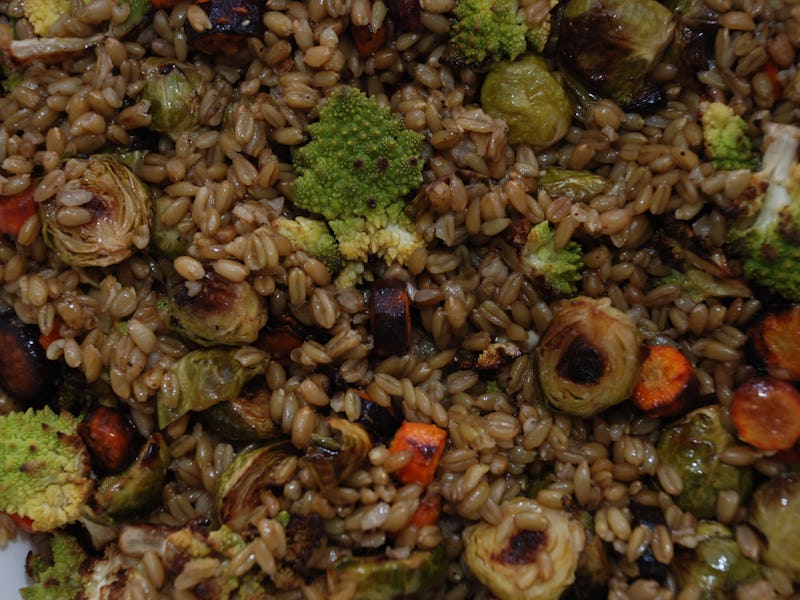Why the Ancient Grain Freekeh Isn't the Next Quinoa ... Yet.
Peasant-style roasted green wheat is delicious and crazy expensive, but modernized production promises to cut costs.

Three years ago, Philadelphia serial entrepreneur Noam Kugelmass heard that quinoa’s alt-grain throne was about to be overthrown by an ancient grain called freekeh. So he went all-in. Before long, he and Bistro 7 chef-owner Michael O’Halloran were slinging the roasted green wheat into tortillas behind the counter at their pop-up restaurant, Freekeh Burrito. Nutty and smoky with a bulgur-like texture, the nutrition-dense freekeh had everything it needed to be the next cool-kid retro supergrain — except the right price.
“Not a lot of people have heard of it, and there’s not a lot of demand, so the price is pretty steep,” Kugelmass tells Inverse. Freekeh Burrito served up grain-filled nouveau-Mexican fare for one glorious summer before disappearing into the foodie abyss. Taste wasn’t the issue — “People were delighted,” Kugelmass says. It was just so damned expensive.
These days, a 1-lb. bag of freekeh on Amazon will run you about $11, while you could get the same amount of organic quinoa for about $6.40. If, for whatever reason, you wanted the same weight in organic wheat berries, it would set you back about $7.39.
Freekeh is technically the name for a specialized process of milling wheat — not the grain itself — a process that is as costly as it is ancient (it dates back to 2,300 B.C.E. in the Middle East) because its production had never been modernized. Young wheat stalks are sun-dried, slightly burned, then rubbed to expose the smoky green grains inside. It’s a labor-intensive process, one that only a handful of farms and mills had been willing to undertake until Greenwheat Freekeh came along.
“We are the only company in the world to have modernized the production process for making freekeh in 4,300 years,” the company’s managing director, Tony Lutfi, tells Inverse. He started his company in Australia in 1997, which, he admitted to Smart Company, was “15 years too early.” Now, encouraged by wheat freaks like Kugelmass, burgeoning sales in the Middle East, and freekeh’s increasing adoption by health-chic food bloggers, he thinks the time is right to ramp up his company’s building capacity and expand licensing for his technology to international markets. “Today,” he says, “freekeh is the No. 1 supergrain in the world, and we value add to it in excess of seven times.”
This is good news for the currently dormant Freekeh Burrito, which never sought permanence because, at the time, pricing the food at cost would’ve made for terrible sales.
Freekeh isn’t at the top of the grain heap yet, but with Lutfi’s help, it could be. Though he admits it lacks the Peruvian grain’s gluten-free label, and doesn’t bring such a novel taste, Kugelmass, ever the proponent, still holds out hope that freekeh could become as widely sought as quinoa. “I think if the price were less than it is now, and it were properly marketed, then yes,” he says. Comfort food doesn’t need to be exotic to be attractive, after all. “With quinoa — the taste is like, whoa,” he says. “But depending on how this stuff is milled, it could be like couscous, or bulgur — it’s still wheat.” Bring down the cost, and watch its versatility emerge.